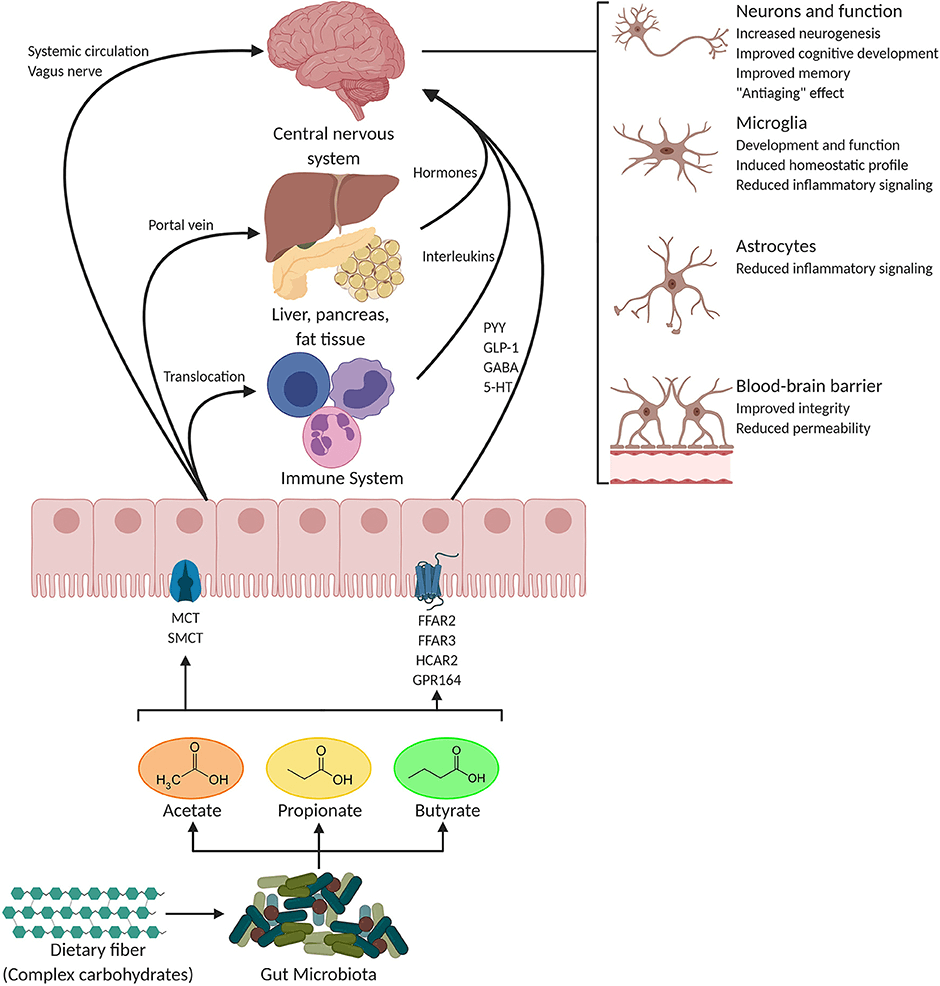Short-chain fatty acids (SCFAs) are the products of fermentation of dietary fiber by microorganisms in the intestine and mainly include acetic acid, propionic acid, butyric acid, valeric acid, isovaleric acid, capric acid and isohexanoic acid. The substance is mostly present in the human intestine in the form of ions and is absorbed and utilized by the intestine mainly through the transporter. The substance can promote cell growth, improve the function of the intestine, influence cardiovascular metabolism, and have anti-inflammatory, anti-tumor and immunomodulatory effects.
Physiological effects of short-chain fatty acids
- Providing energy
In the human intestine, short-chain fatty acids are absorbed by intestinal epithelial cells, undergo beta-oxidation in mitochondria, and provide energy to colon cells, mucosal epithelial cells, and muscles.
- Maintaining the balance of water and electrolytes
Studies have shown that butyric acid in short-chain fatty acids can affect the secretion of Na+, K+ and Cl -, propionic acid can reduce the secretion of HCO3 -, acetic acid can inhibit the secretion of Na+ and Cl -, etc., thus maintaining the water-electrolyte balance in the organism.
- Protecting the barrier of intestinal mucosa
Short-chain fatty acids can increase the thickness of intestinal mucosa, promote the proliferation and differentiation of intestinal epithelial cells, promote the synthesis of intestinal epithelial cell tight junction protein, and inhibit the permeability of the intestine, which can enhance the mechanical barrier function of the intestinal mucosa. Short-chain fatty acids can also nourish immune cells, promote the secretion of mucin, lubricate the intestinal tract, and reduce the adhesion of pathogenic bacteria on the intestinal mucosa. In addition, they enhance the regulation of the chemical barrier function of the intestine by increasing the intestinal trans-epithelial resistance.
- Regulating pH in the intestinal tract
Short-chain fatty acids are the main anions in the intestinal tract, which can lower the pH value in the intestine, promote the proliferation of probiotic bacteria in the intestine, and inhibit the reproduction of specific pathogenic bacteria. An increase in the concentration of short-chain fatty acids in the intestinal tract can lower the pH value in the intestinal tract, thereby inhibiting the growth of pathogenic or conditionally pathogenic bacteria such as Escherichia coli and Salmonella spp.
- Stimulating the secretion of gastrointestinal hormones
Short-chain fatty acids can increase the secretion of gastrin and gastrin, which in turn can promote the secretion of gastric acid, gastric emptying and the growth of digestive tract mucosa. In addition, short-chain fatty acids can directly promote the secretion of glucagon and insulin.
 Potential pathways through which SCFAs influence gut-brain communication (Silva et al., 2020)
Potential pathways through which SCFAs influence gut-brain communication (Silva et al., 2020)
Detection of short-chain fatty acids
- GC-MS method
Short-chain fatty acids contain carboxyl groups, which are polar and can adsorb with the gas chromatography column, thus affecting the reproducibility of the column. Therefore, derivatization of short-chain fatty acids is required before their detection by gas chromatography. If the content of short-chain fatty acids in the biological sample to be detected is low, tandem mass spectrometry can be used to significantly improve the detection capability of the detector.
- High-performance liquid chromatography
High-performance liquid chromatography is characterized by mild detection conditions and high accuracy of the results. However, because the chemical structure of short-chain fatty acids lacks groups with UV absorption or fluorescence, they need to be derivatized before they can be detected. Results obtained by this method can be highly accurate and reproducible.
- Capillary electrophoresis
Capillary electrophoresis-UV detection is capable of separating a large range of short-chain fatty acids, but its sensitivity is low. The capillary electrophoresis-fluorescence assay is more sensitive, but its separation range is narrower.
Reference:
- Silva, Y. P., Bernardi, A., & Frozza, R. L. (2020). The role of short-chain fatty acids from gut microbiota in gut-brain communication. Frontiers in endocrinology, 11, 25.




